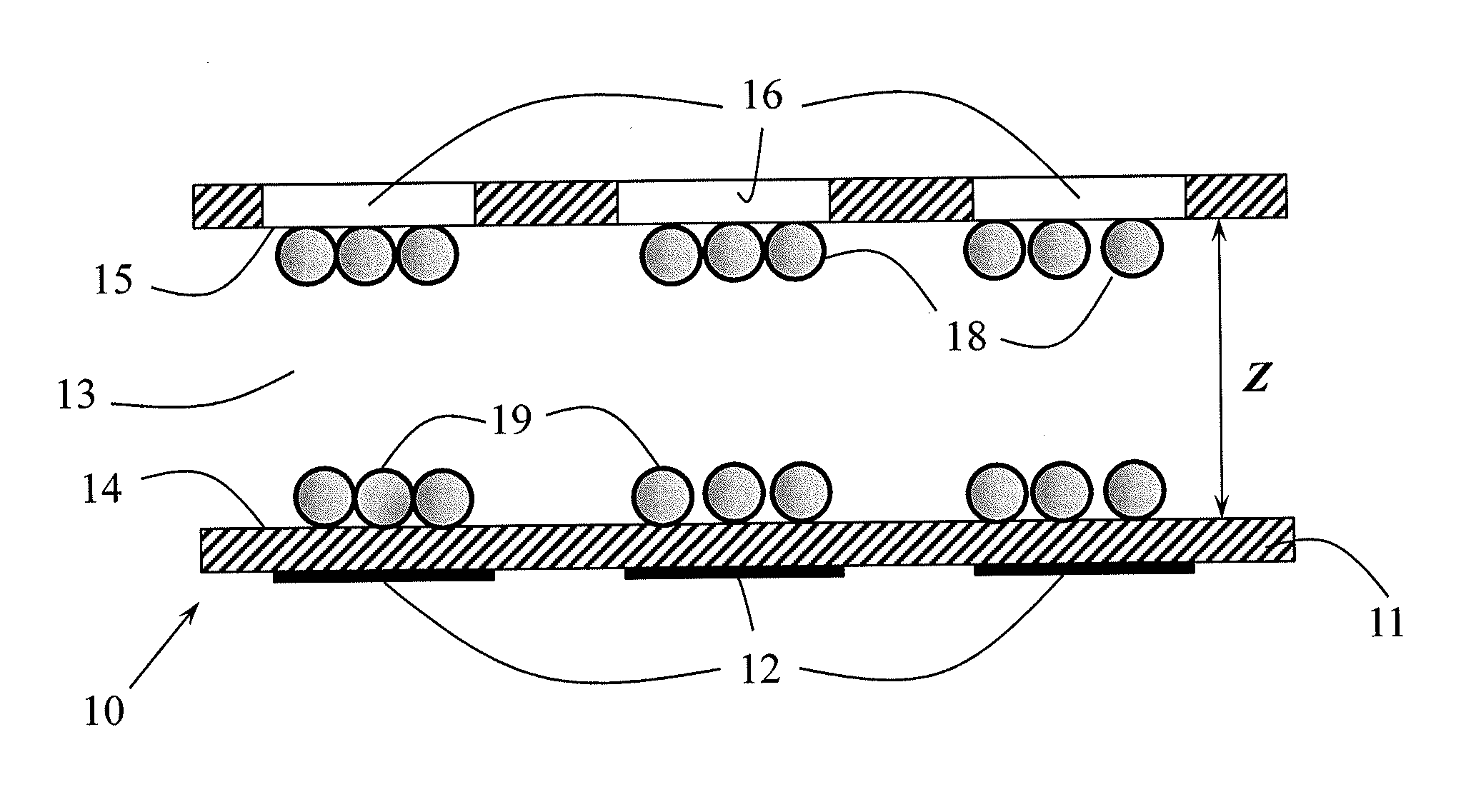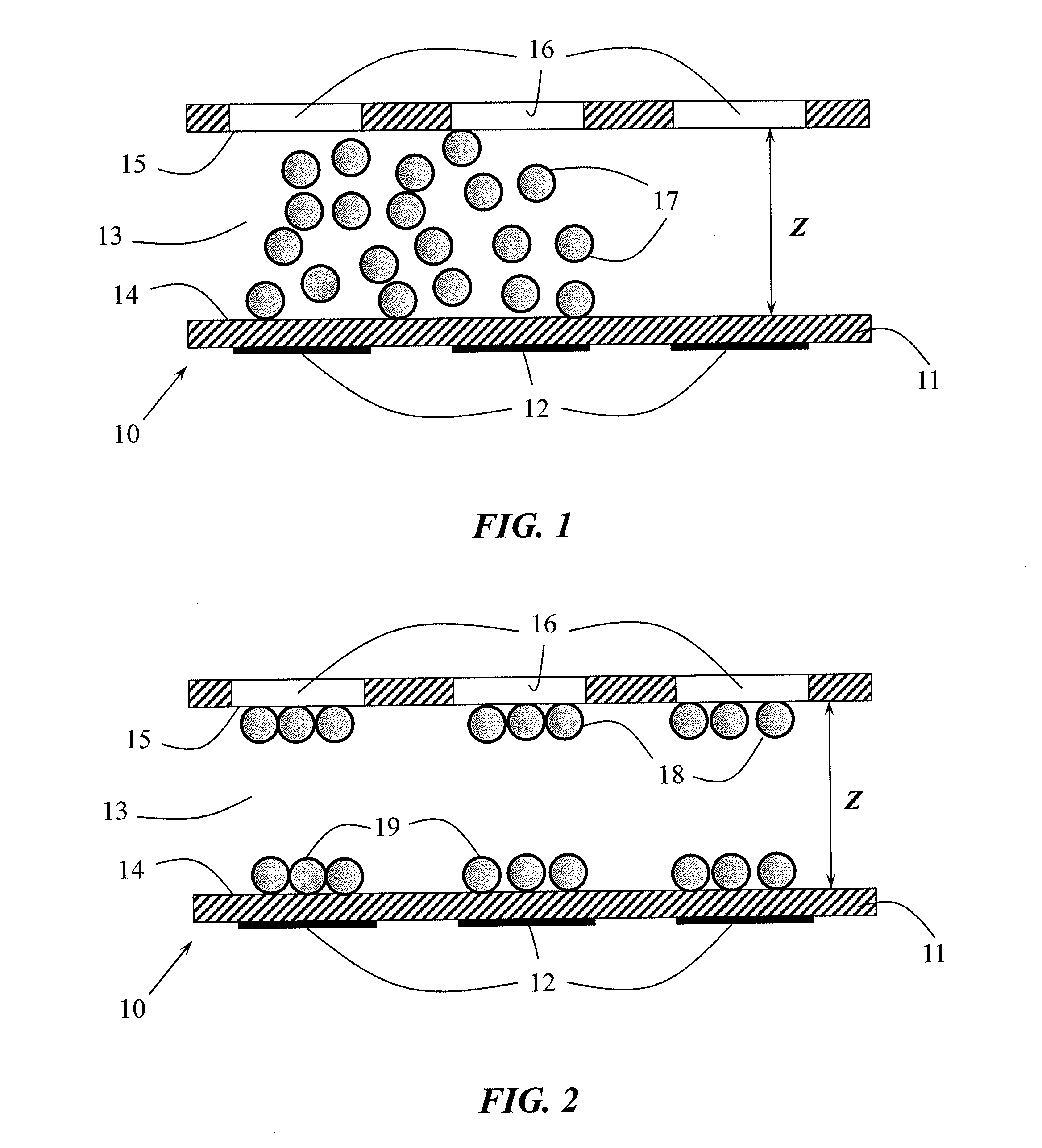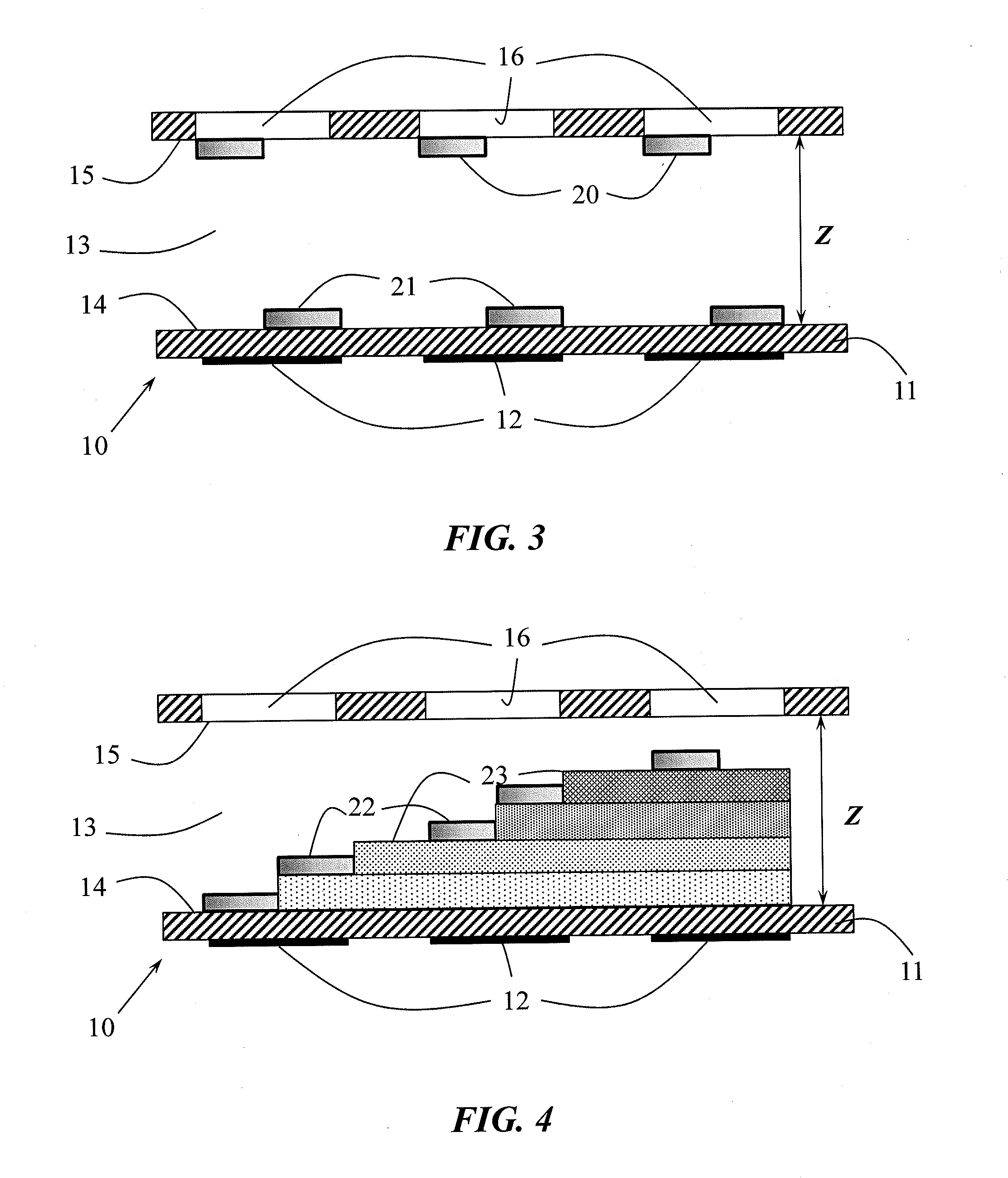Devices and methods for monitoring and controlling temperature in a microfluidic environment
a microfluidic environment and temperature monitoring technology, applied in the field of thermal management, can solve problems such as interference with accurate measurement, and achieve the effect of more accurate thermal maps of the chamber
- Summary
- Abstract
- Description
- Claims
- Application Information
AI Technical Summary
Benefits of technology
Problems solved by technology
Method used
Image
Examples
example 1
[0064]In this experiment, 950 μL TE buffer was mixed with 5 μL Tween® 20 and approximately 45 μL LC-70 or LC-80 (LCR Hallcrest, Glenview, Ill.) thermochromic liquid crystals. This mixture was used to test the temperature inside a microfluidic cartridge which was filled with silicon oil as a filler liquid. This mixture was added to one reservoir on the cartridge and approx. 1 μL was dispensed using electrowetting. The droplet was then transported through PCR zones on this cartridge to test the temperature inside the cartridge. The electrowetting and heating (from bottom of the cartridge) was performed using a commercially available R110 instrument (Advanced Liquid Logic, Morrisville, N.C.). The electrowetting movement of the thermochromic liquid crystals was successful and a transition in color from red to green to blue was observed for both liquid crystal mixtures when they passed through appropriate thermal zones inside the cartridge with temperatures set above their color-transiti...
example 2
[0066]In this experiment, thermochromic liquid crystals with a color transition from clear to blue color at 94.5° C. (LCR Hallcrest, Part No. SLN33R94.5C1W) were used to calibrate the actual liquid temperature on a microfluidic cartridge, and to determine the effect of mixing on temperature distribution. One-microliter droplets of liquid crystals in aqueous solution were introduced to a temperature-controlled microfluidic device, heated from below with an external heater. Results of this experiment are briefly summarized in Table 1 below. The crystals were used to determine that 101° C. at the heater was required to raise the microchannel to 94.5° C. Further, the crystals indicated that mixing induced by moving the fluid back and forth along the channel resulted in the need to raise the heater temperature to 102° C. in order to raise the fluid to 94.5° C. Presumably, an increase in heat dissipation and / or thermal uniformity of the fluid was responsible for this mixing result. Withou...
PUM
 Login to View More
Login to View More Abstract
Description
Claims
Application Information
 Login to View More
Login to View More - R&D
- Intellectual Property
- Life Sciences
- Materials
- Tech Scout
- Unparalleled Data Quality
- Higher Quality Content
- 60% Fewer Hallucinations
Browse by: Latest US Patents, China's latest patents, Technical Efficacy Thesaurus, Application Domain, Technology Topic, Popular Technical Reports.
© 2025 PatSnap. All rights reserved.Legal|Privacy policy|Modern Slavery Act Transparency Statement|Sitemap|About US| Contact US: help@patsnap.com



